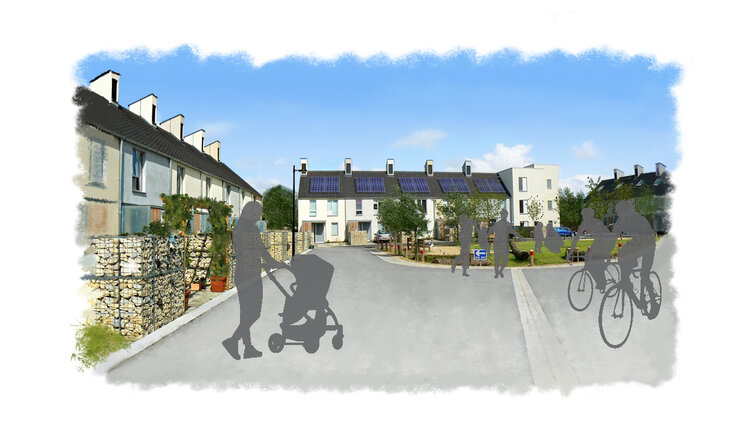This guest article comes from Richard Lupo, Managing Director of Suss Housing, who created the SHIFT environmental accreditation used by many social housing landlords. This article was first published on December 8 on the Suss website, Richard has kindly given us permission to re-publish in SHM. For more information on Suss check out their website: https://www.susshousing.co.uk/.
Introduction
A quick word search on the new “The Charter for Social Housing Residents Social Housing White Paper” resulted in 5 specific mentions of “climate change” so we took a deeper look with an environmental perspective. We’ve also suggested actions that landlords can take now to anticipate the outcomes of this paper and the proposed review of Decent Homes.
Just to note, the new regulatory powers will extend to Local Authorities who manage social homes as well as ALMOs and TMOs.
Good quality home and neighbourhood to live in
Chapter 6 is the main section dealing with environmental impacts although there are hints at other issues in other chapters.
- Energy efficiency – this is clearly linked with existing policies and strategies. In other words, achieving Energy Performance Certification (EPC) band C by 2030 looks like it will be made a requirement for all social landlords. We did get excited when we saw “EPC B and C”, but then we realised it was an unusual typo and should read “EPC Band C”.
- Green spaces – these feature heavily in the paper and again align with existing national strategies and policies including those for new build. It rightly identifies the connections between green spaces and human wellbeing. The paper doesn’t explain, though, that larger and better green spaces contribute to better air quality, more biodiversity, better summer cooling, flood attenuation and increased carbon sequestration. There is no defined reporting metric so landlords may want to start anticipating this now.
- Adaptation to climate change – there is a specific reference to “responding and being resilient to climate change” in the Decent Homes review. Although not specifically mentioned, the most obvious factors in this context are flood risk and overheating risk. Flood risk metrics are relatively straightforward, but overheating risk is trickier.
There is specific mention of a review of Decent Homes “to consider if it should be updated, including how it can better support the decarbonisation and energy efficiency of social homes, and improve communal and green spaces.”
Hints to the future
Clearly the first part of the paper is about fire safety and this is absolutely a priority. Given, though, the adverse impacts of climate change can also affect resident safety (flooded and overheated homes), maybe reducing carbon emissions should be treated with high priority as well.

Chapter 4 has some interesting statements:
“Strengthen the Regulator of Social Housing’s enforcement powers to tackle failing landlords and to respond to new challenges facing the sector”. Could environmental protection form part of these new challenges?
“Remove the cap on the level of fines the Regulator of Social Housing is able to issue. This will give greater flexibility to determine the appropriate sanction depending on the circumstances, and bring the regulator’s power more into line with other regulatory bodies (such as those in the finance or environment sectors”. Could there be fines from the regulator for not performing on environmental issues?
There is reference to the Planning for the Future White Paper. “The current system of developer contributions would be replaced with a new Infrastructure Levy, which would be charged as a fixed proportion of the development value. These reforms aim to provide greater certainty and transparency. We would ensure that, under the Infrastructure Levy, affordable housing provision supported through developer contributions is kept at least at current levels, and that it is still delivered on-site”. Hopefully this will allow landlords to develop homes to EPC A instead of being at the mercy of S106 agreements from volume housebuilders who only build EPC B homes. Even though there may be over and above costs for doing so in the short term, there are potentially huge “whole life savings” for building EPC A homes. See our blog: Build A rated homes.
What to do next
The direction of this, and many other recent announcements, is clear. Sustainability is back on the Government agenda, but this time reporting will involve robust and meaningful metrics. What’s more, these metrics are increasingly being sought by other stakeholders e.g. banks are now seeking similar metrics for ESG loans. And landlords reporting on the TOMS framework will also have to include environmental metrics. Suggested next steps are:
- Establish baseline positions for all environmental issues using robust metrics that align with national policies
- Carry out gap analysis between where you are now and where the science suggest you should be
- Develop strategies to close the gaps and improve environmental performance
- Carry out annual reporting to monitor progress – use these reports to fulfil other stakeholder reporting (banks, regulator, local initiative etc)
About SHIFT environmental
We hope you found this article useful. By carrying out an assessment against the SHIFT standard you gain robust and meaningful environmental metrics that align with national policies and the science most relevant to social landlords. As well as energy, green spaces, overheating and flood risk for homes we also cover waste, water efficiency, responsibly sourced materials and resident engagement. Our reporting extends to new build and operations too.
Please get in touch if you would like to hear more: info@susshousing.co.uk
Follow Richard on LinkedIn: https://www.linkedin.com/in/richardlupo.



